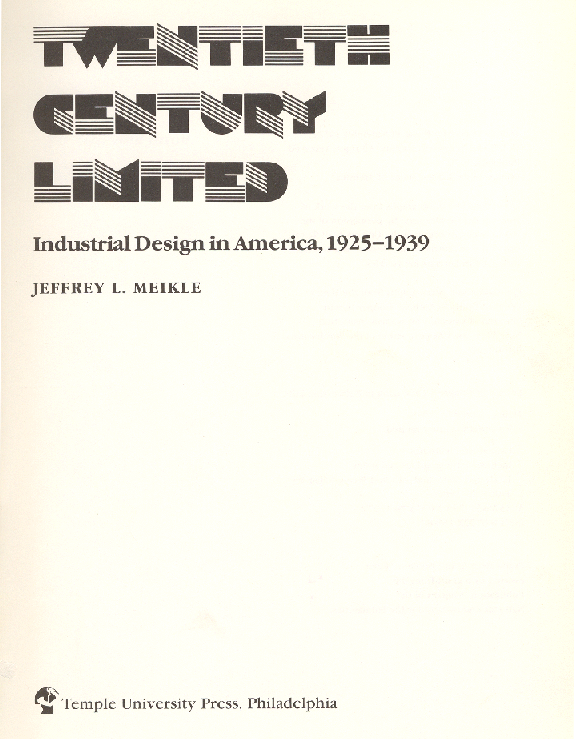Twentieth Century Limited: Industrial Design In America, 1925-1939

Today's typical industrial designer concentrates on the limited goal of providing individual businesses and their products with public images conducive to profit. Each new trademark, appliance, fast-food outlet, or mall store is a statistically derived package for a single corporation's version of the good life. Each design commission stands alone. In the thirties, however, when industrial design emerged as an American profession, its founders hoped to create a coherent environment for what they self-consciously referred to as "the machine age." Industrial design, they thought, would both reverse the Depression's plummeting sales and create a harmonious environment unknown since the industrial revolution. The marriage of art and industry would be renewed.
Although American industrial designers of the thirties occasionally drew on such European architects and theorists as Le Corbusier and Eric Mendelsohn, the American industrial design movement was surprisingly self-contained. The Bauhaus, which looms large in retrospect, remained little known until 1933, when its forced closing stimulated a gradual spread of its ideas to America. After Walter Gropius, Mies van der Rohe, and Marcel Breuer resettled in the United States in 1937, the Bauhaus began to have considerable impact on academics, on critics of design, and on architects, but not on commercial industrial designers, who had previously known the Bauhaus, if at all, as one of many expressions of modernism. More significant in their education was French decorative art of the twenties ― now widely known as Art Deco. Even so, American designers considered streamlining, the prevalent idiom of the thirties, as a nationalistic reaction to French extravagance.
Some historians have used the term Art Deco to encompass all of the architecture and design of the period between the World Wars. David Gebhard has more perceptively distinguished between "the Zigzag Moderne of the '20s" and "the Streamlined Moderne of the '30s." In the following study I refer to the former either as "the exposition style," in order to emphasize its source in the Paris Exposition of 1925, or as "modernistic," an adjective in wide use at the time. Since the term "streamlined moderne" misleadingly implies French derivation, I prefer instead "the streamlined style" or "streamlining." "Art Deco," a term coined by Bevis Hillier in 1968, remains confusing and is most appropriate for describing a period revival of the seventies. A critic who wanted to describe in a single term such disparate designs as the Chrysler building, Le Corbusier's urban plans, and the Baby Brownie Kodak ― all of which have been called examples of Art Deco ― could do no better than to adopt the adjective "machine-age." Industrial designers of the thirties recognized no theory as supreme. In the American tradition of practical eclecticism, they took whatever seemed modern and transformed it for commercial use.